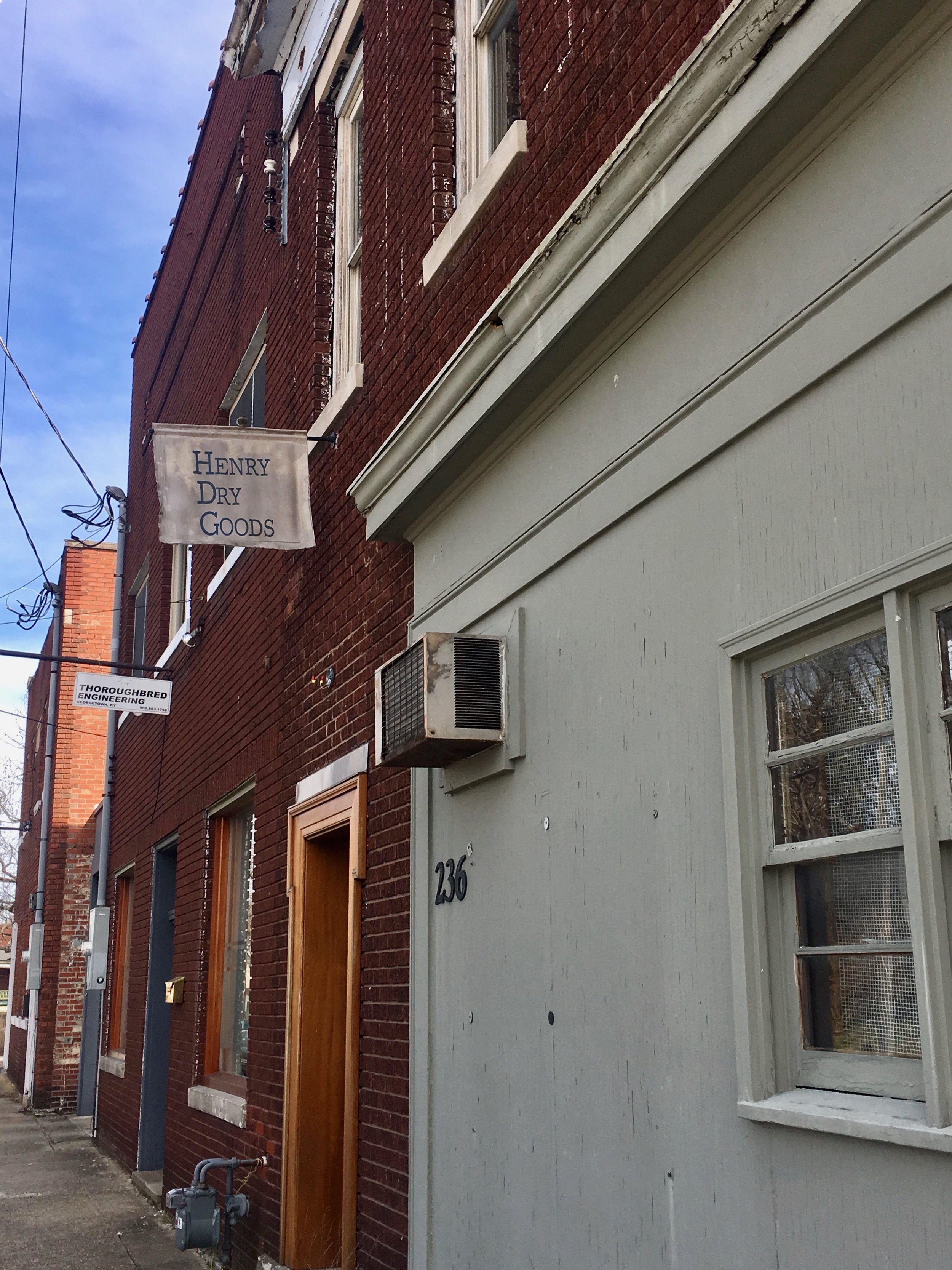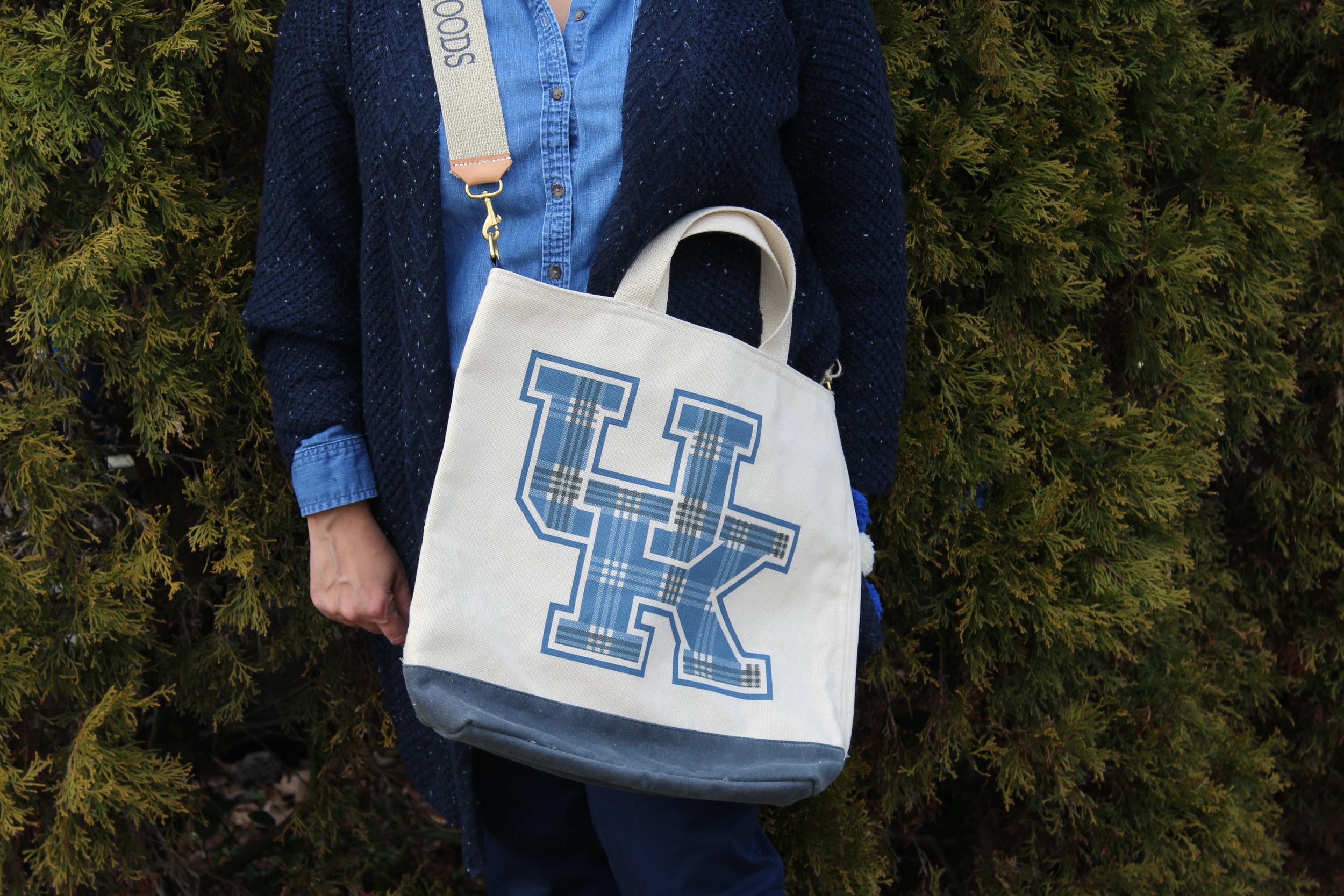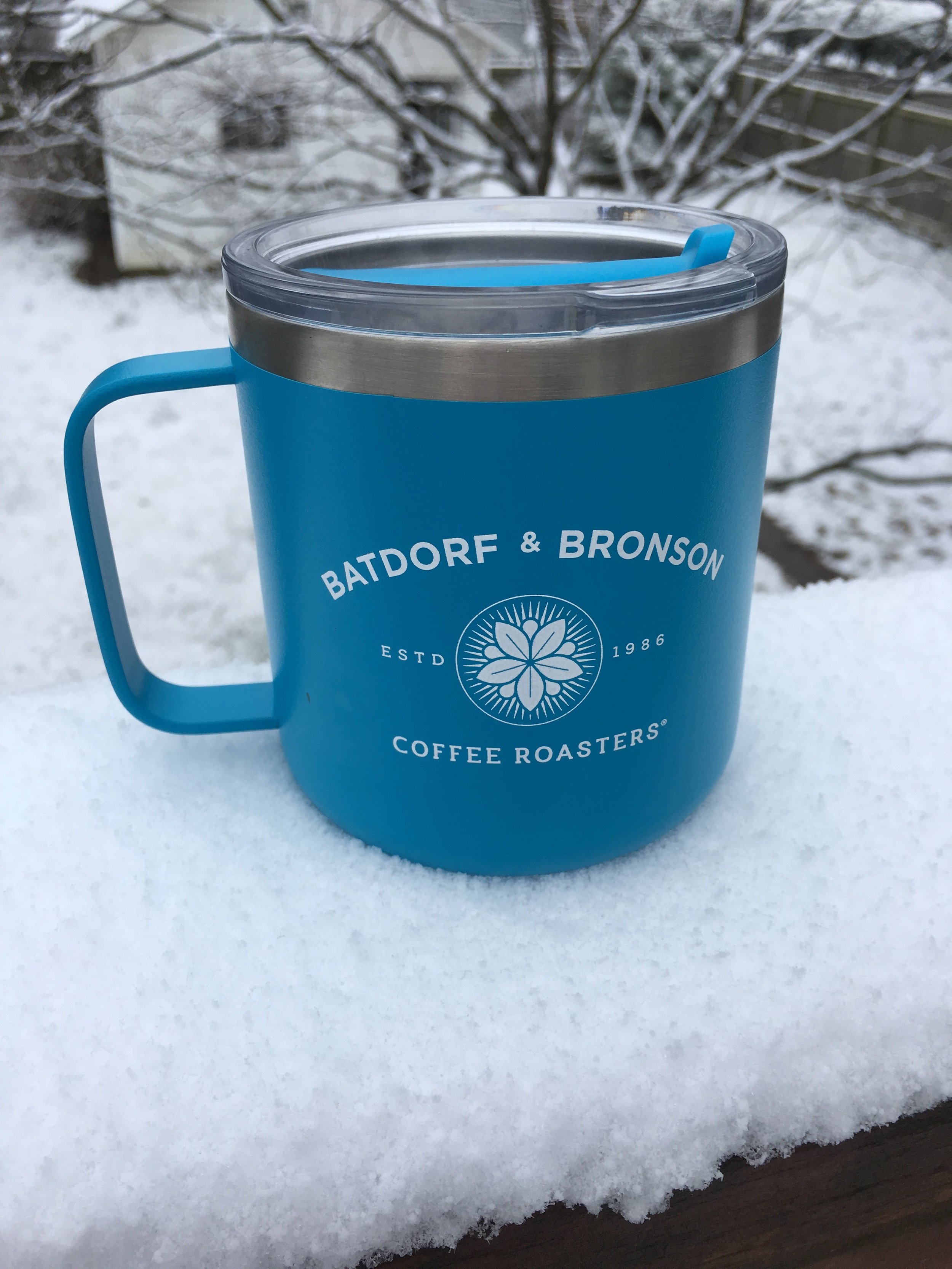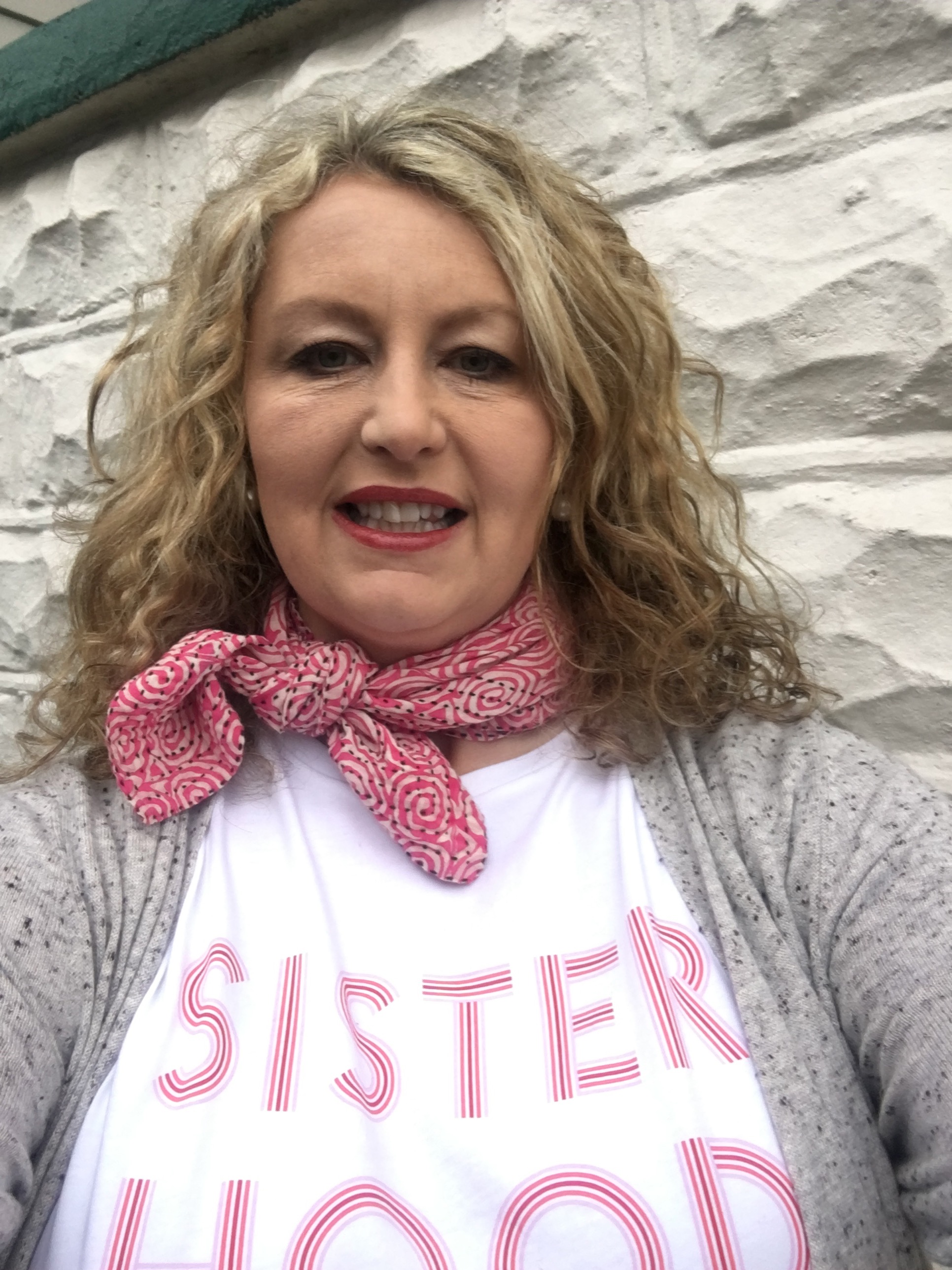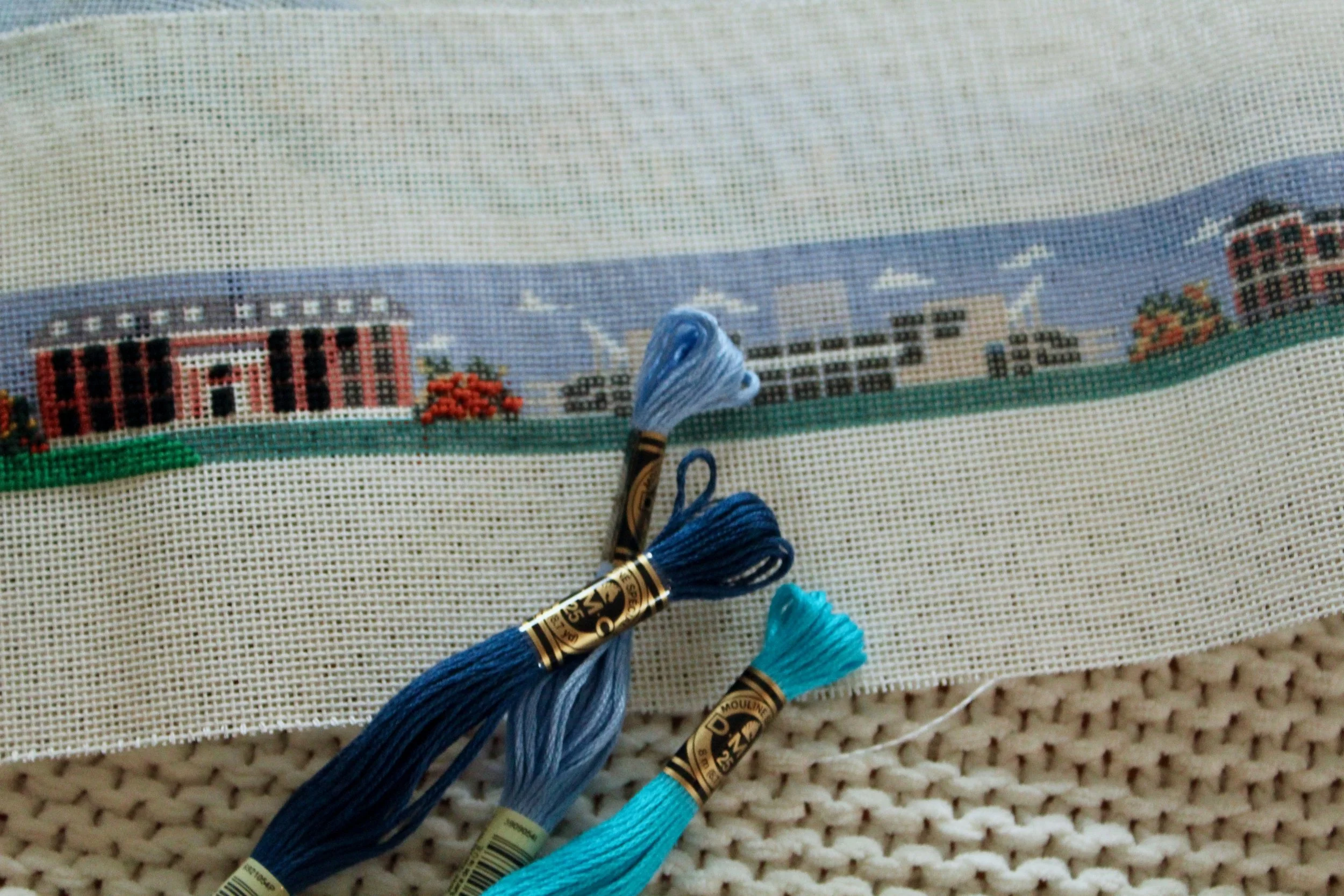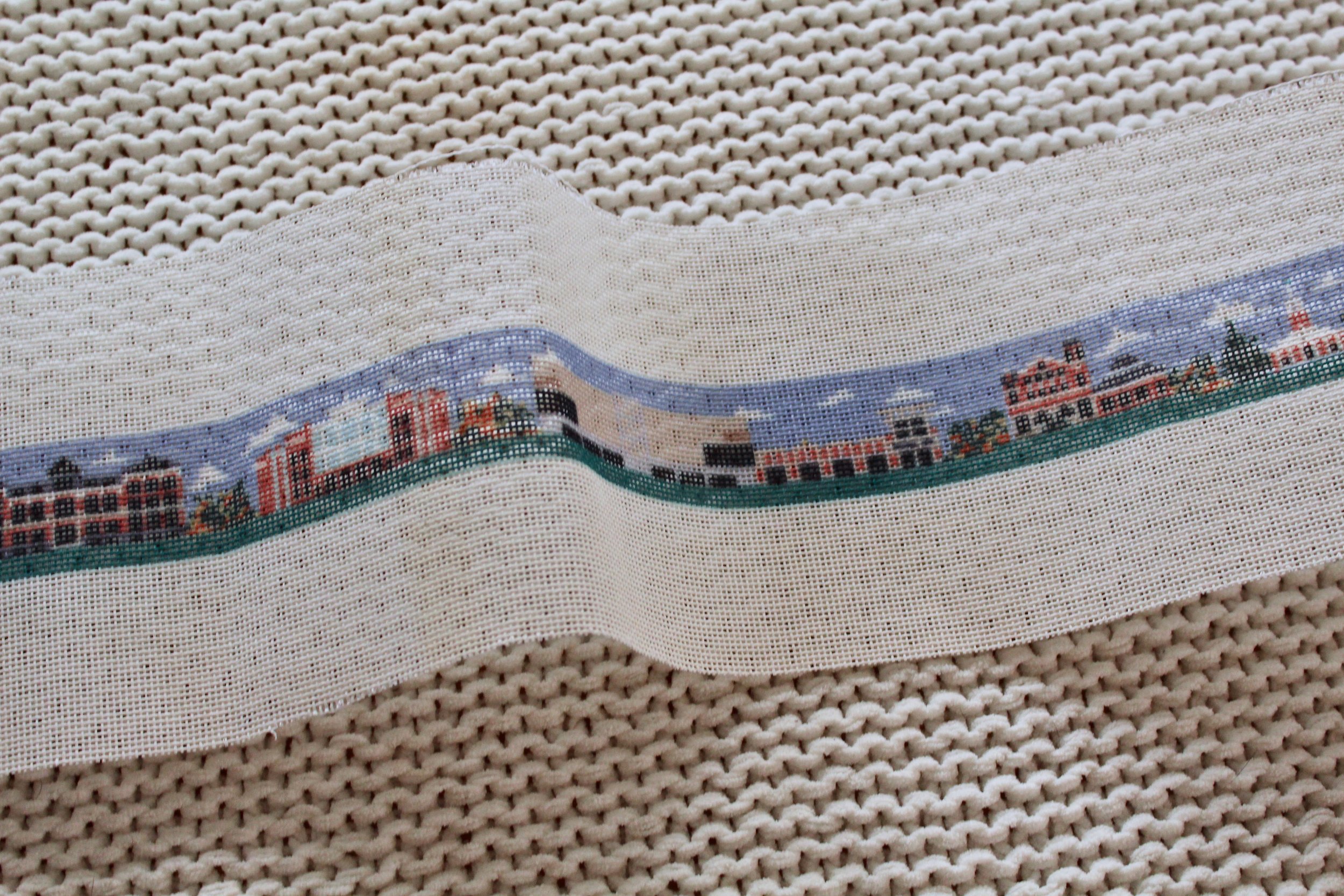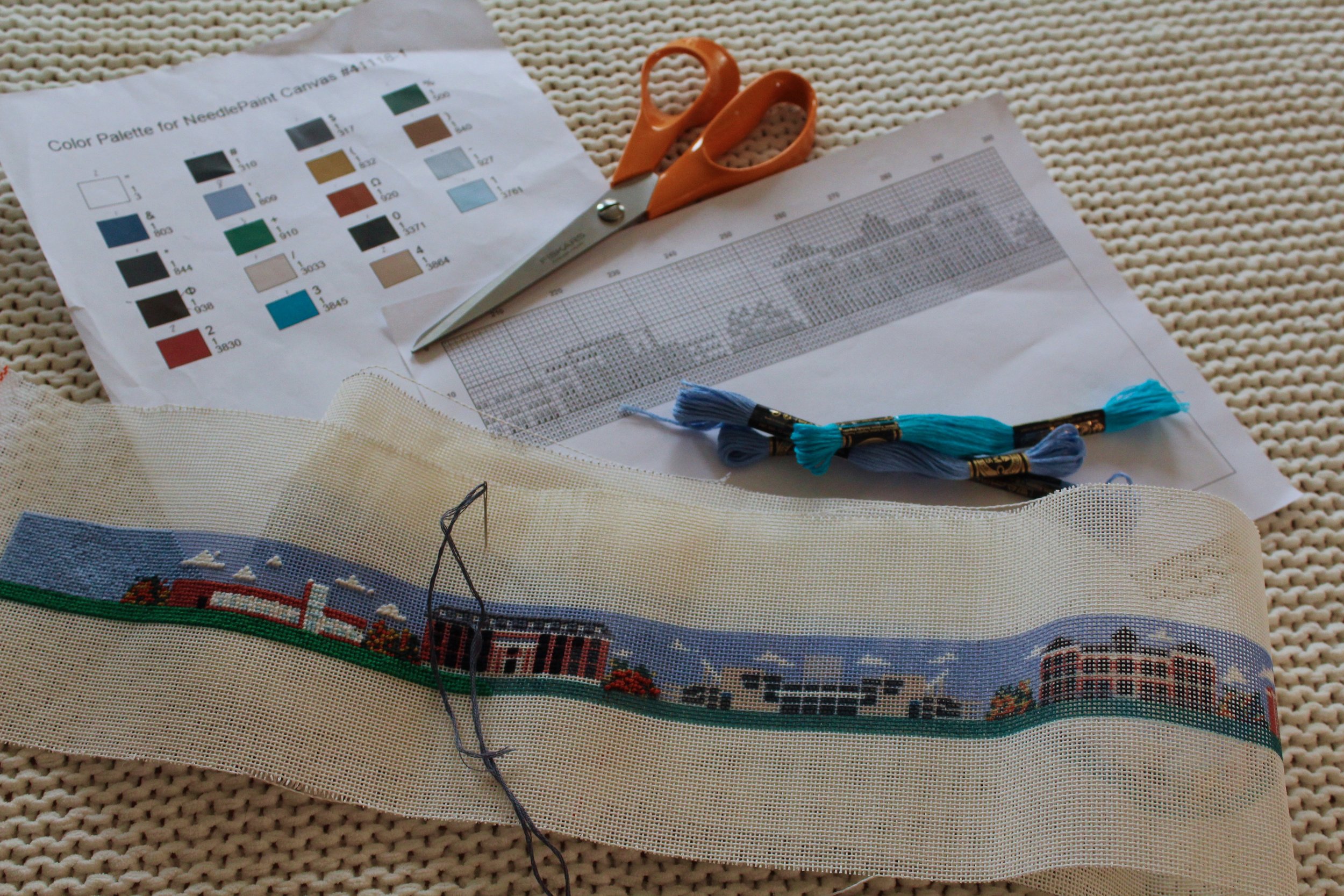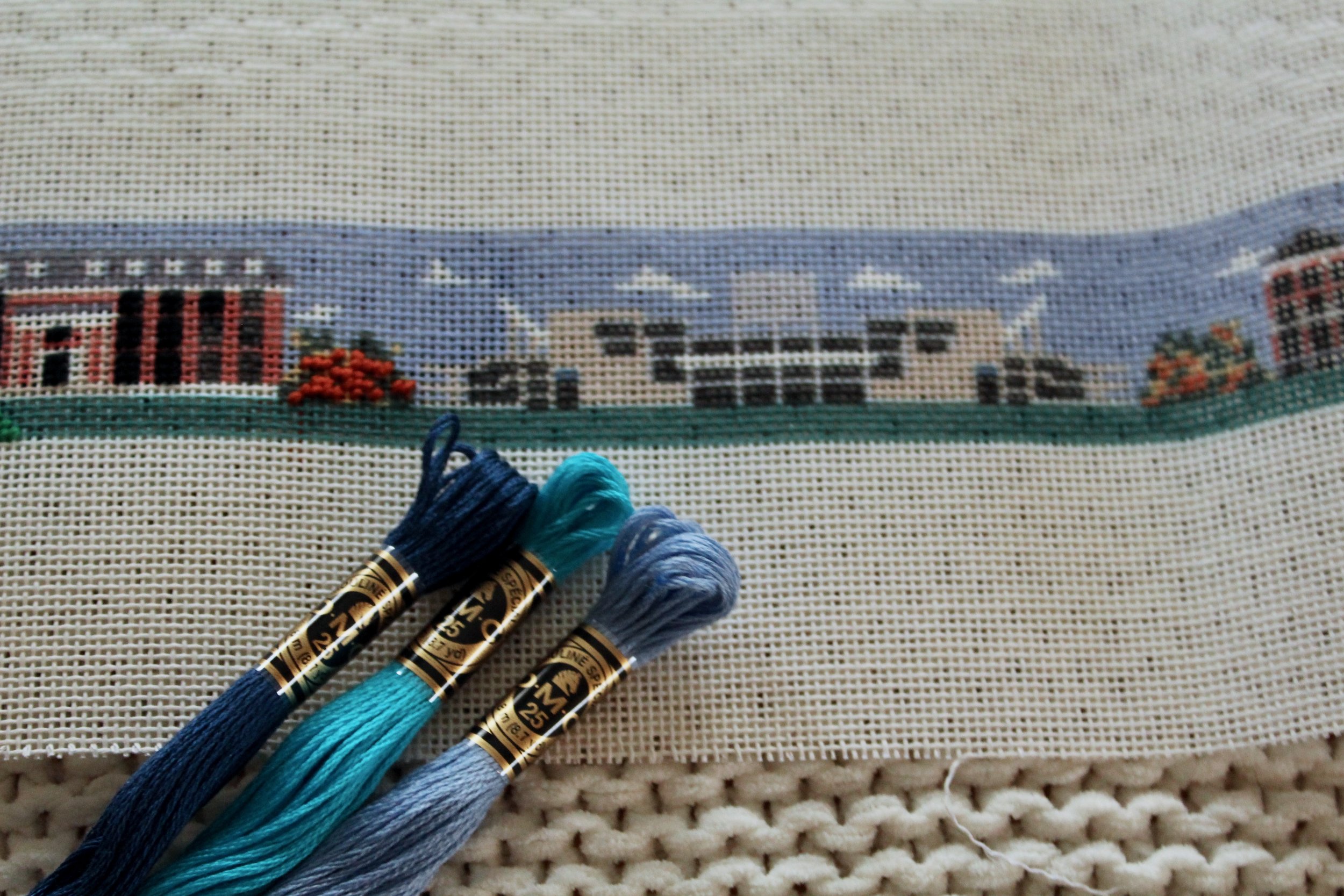How to Clean Your Closet Responsibly
Most of us spend a lot of time thinking about where we’ll buy our next favorite piece of clothing, but we don’t always task ourselves with finding the best home for those no-longer favorite pieces.
Most of us spend a lot of time thinking about where we’ll buy our next favorite piece of clothing, but we don’t always task ourselves with finding the best home for those no-longer favorite pieces.
Of course, earlier this year, Netflix dropped the “Tidying Up with Marie Kondo” series; predictably, Goodwills around the country were inundated with stuff that no longer sparked joy. People donated their no-longer-loved items in record numbers. And, of course, we’re hitting the time of year when we’ll soon put away our sweaters and start to think about what to wear to Keeneland, Easter Sunday, and Derby. I have a few tips that will help y’all make those transitions with a vision toward utility.
Recently, I’ve started to think a lot more about the complete life cycle of a garment, and where things actually go when we’re finished with them. My eyes have been opened by a couple of badass Kentucky ladies whom I follow on social media. Gretchen Hunt, a Louisville-based attorney and advocate for domestic violence victims, runs an instagram account called ThriftingKY that details her adventures in shopping for a thrifted wardrobe. Samantha Moore, a Lexington designer and fellow Transylvania alumna, upcycles vintage garments into stunning, one-of-a-kind pieces for her brand Modern Country Couture. Both Gretchen and Samantha are committed to reducing the issue of textile waste. Both Samantha and Gretchen have made me think far more closely about whether I actually need the things I have or the things I want to buy.
My involvement with Dress for Success over the past few years has made me think far more deeply about the ways in which I discard or donate the items I no longer need or want. Y’all know that I’m committed to both volunteering and raising money for the Dress for Success affiliates in Lexington and Louisville; it is so incredible to see the profound effect that a newer work outfit can have on a woman’s future. Dress for Success has also had an important impact on my consumer habits. The other day, I was volunteering in the Dress for Success boutique when I saw a really pretty skirt. Upon closer inspection, I realized that I’d once owned a skirt — lilac and grey wool from Loft — just like it. It was 15 years old, but it was a timeless style and quite gorgeous. If it were still in my closet and still fit (few of us are the same size 15 years later…), I’d wear it today. Isn’t that what we should all be striving for a little more of? Timeless styles, reduced waste, and keeping ourselves a little healthier and trimmer? Of course, I certainly hope that skirt finds a great home, and I’m so glad that its previous owner was socially conscious enough to donate it to a place where it can be used. I’m embarrassed to say that I have no idea what happened to my own skirt in that style, which is an area where I need to do better.
Here are the rules I’ve come up with for cleaning my closet and responsibly resourcing my items; I hope that they can help you as well. I’m providing specific examples from my closet; I hope these help you with your own decision tree.
Rule 1: Only Keep Clothes that Fit
Last fall, I absolutely fell in love with this navy Draper James dress. It’s so flattering and can be styled for any occasion. It ran a little big to begin with, and then I lost some weight. So, this spring, it no longer fits! My number one rule for cleaning closets is that there is absolutely no reason to keep clothing that is ill-fitting. You just won’t wear it. Now, I seldom do a one-to-one replacement when cleaning out my closet. This was an exception because I know the dress is so flattering and functional, and I found the smaller size at a very reasonable price on eBay. I will consign or donate the larger size; hopefully it will find a home with someone who loves it as much as I do! In most cases, however, I stick to finding a similar, suitable replacement.
Rule 2: Only Keep Clothes that Flatter or Serve a Purpose
We all have things in our closet that we don’t quite know about. Maybe it’s an impulse buy. Maybe someone bought it for you. Maybe it’s from a weird phase when you were trying to make florals happen. And, it just sits there. For me, it was this French Connection wrap dress. It’s a stunning piece. It was perfect for a photo shoot I did last spring. And it’s never quite fit right. So, it needs a new home; it goes to the consign or donate pile.
Rule 3: See if it Could Serve Another Purpose
Honestly, I think this is an important one. There are other ways that our clothing can be used. I grew up with a grandmother who makes quilts, so my mind is never far from that use. Old t-shirts, for example, have a better use as a quilt than as drawer-fillers. (Bonus use: The excess t-shirt material makes THE BEST dusting cloths!!) I have several Derby-themed t-shirts that I plan to eventually turn into a quilt. You can read my t-shirt quilt tutorial here, or visit Louisville-based Campus Quilt to have a more professional-looking version made for you!) Similarly, a piece of clothing that you can’t bear to part with but that has a flaw that makes it unwearable makes a perfect quilt fabric. My granny made me this quilt using fabric from an old Lilly Pulitzer Kentucky Derby print. This would be a great way to repurpose a special dress or skirt into an heirloom!
Old party dresses in not-quite reparable conditions can become great dress-up materials for kids. The possibilities here are really only bounded by your time and imagination!
Step 4: Make a Responsible Plan for Your Discarded Items
If you only have one takeaway from this blog post, I sincerely hope this is it. Be responsible with the way you discard your item. It’s truly not enough to discard anything that sparks joy. The key here is to be realistic about your own situation. Consigning or selling your pieces can be a great way to earn a little bit of spare money, and, of course, donating your pieces to a charity or thrift store can help it find a deserving new home. But, responsible rehoming goes a little farther than just sorting into consignment and donation piles. You need to dig a little deeper to decide where an item goes. Here are my 3 basic rules of thumb:
(a) Assess the item’s value.
We all have some items in our closet that are nicer than others. Sometimes, these things have a higher resale value. Lilly Pulitzer, for example, is a brand for which well-maintained items can achieve a high resale price. You can sell a Lilly item on eBay or Poshmark, at consignment, or in a brand-specific Facebook group for close to its original retail price. Here in Louisville, we several GREAT consignment shops that focus on brand name women’s resale: Stella’s and Sassy Fox are both located in St Matthews, have the sweetest staffs ever, and are fabulous to buy from or sell with. Another great use for higher-value items is to donate to a charity that can turn them into creative fundraisers. Many Dress for Success affiliates, for example, pull higher value items from their donation piles for individual sale or for a higher price at their inventory sales. Goodwill has created the ingenious ShopGoodwill auction site. While these mechanisms have made the old “I found a Gucci bag at a Goodwill in a nice suburb!” urban legends even less likely, they’ve certainly helped to convert more donations into cash to nonprofits!
(b) Assess Your Commitment
Don’t let a whole bag of “this can go to consignment once I wash it and press it and sew on a button” things sit around. The truth is, you aren’t going to do that if you don’t do right now. Similarly, be honest with yourself about your financial motivation for selling your items. If you’d rather have the cash value for your item at the time you release it, go with eBay or a resale store like Clothes Mentor that pays cash up front. True consignment stores pay you when your item sells; this usually means a month’s delay in receiving payment for the item.
(c) Assess a Charity’s Needs
This is so important, y’all. We are so fortunate here in Kentucky, especially here in Louisville, to have an amazing network of 501(c)(3), not-for-profit organizations serving a variety of populations. If you’re going to make a donation of used clothing, please take the time to touch base with the organization and see what their needs and guidelines actually are. For example, I’ve learned through years of grant-matching volunteer work that, as a general rule, missions and shelters will not accept used underwear and socks, no matter how clean. It’s an issue of dignity and basic hygiene, not a reflection on how well you washed your old socks. Similarly, a huge need for Dress for Success is always work-appropriate clothing that does not require dry cleaning. While many of us grumble about our monthly dry cleaning bill, it’s an actual impediment to use for a lot of people who are struggling to maintain basic employment. Remember, too, that donation-based charities like Dress for Success still have to pay rent for their spaces and don’t have a ton of storage space. Because of this, they’re really limited in how much out-of-season inventory they can house. You’d be far better off to donate by wear-now season! Remember to always check with your charity of choice to see what they need and how they can best put your item to use.
Rule 5: Be Honest!
Be honest with yourself when assessing your item’s path. Ask yourself if this item is as valuable as you perceive it to be. A 15 year-old Louis Vuitton bag may have a lot of sentimental value, but will most likely show so much wear as to command a far lower resale price than you anticipate. You may have splurged on a trendy cold-shoulder top two years ago, but many resell venues may deem that look to be, mercifully, past its expiration date. Be honest about the condition that your item is in. Work slacks with a torn hem aren’t immediately interview-ready for Dress for Success. Be honest about the decision you’re making to part with an item, and you’ll figure out a way to give it another use!
Let me know in the comments how y’all clean out your closets and where you donate your items!!
Henry Dry Goods
Henry Dry Goods provides a gorgeous mix of edgy and preppy to small textiles!
I recently visited the very cutest shop in Lexington!
Henry Dry Goods is so adorable, y’all! It’s on Jefferson Street, among the most lovely little nook of stores and restaurants. Lexington is really having a moment for shopping and dining! I swear I do more shopping there than I do in Louisville these days, and I LOVE that the area around Transylvania — my alma mater — has gotten so much more fun and trendy!
I had the wonderful opportunity to speak with Henry founder and CEO, Sherri Henry Wolf, and her partner Dianne Oakes at their shop, and I was enchanted in every way. The decor is so beautiful, and the Henry textiles — pillows and bags at the intersection of preppy and edgy — are simply gorgeous.
As I talked to Sherri and Dianne, the most beautiful theme of second chances kept popping up. Sherri told me how she lost her first company as a consequence of a divorce. Dianne introduced me to this sweet girl, who was one of the dogs displaced by Superstorm Sandy. It was just an amazing vibe of beauty and grace and strength. I’d entered their loft space a fan of their handbags; I left a true believer!
And we haven’t even talked about the monograms yet! Y’all know I love a good monogram, and Henry features some of the most lovely monogram styles I’ve seen in ages!
These vintage-style ribbon straps add an even more personalized touch to your Henry bag.
In case I wasn’t in love enough, Henry has a gorgeous line of UK gear! Sherri collaborated with the University of Kentucky to reimagine the iconic UK Plaid for some gorgeous pieces, and they also carry clear, stadium-friendly crossbody bags! Oh, and Mrs. Calipari has one of those plaid crossbody bags! Is there any better endorsement than that?
I simply fell in love with my Ben Game Day Tote. This would be such a fun bag to pack for the SEC tournament. I’ve already used it as a purse and a work bag; it’s an amazing piece for Wildcat fanatics like me!
Thanks so much to Henry for the fabulous tour, and the gorgeous bag! I can’t wait to share more of their goodies with y’all!
{I was provided product by Henry Dry Goods in exchange for an honest review. All opinions are my own!}
Batdorf & Bronson Guatemala Finca La Esperanza Coffee Review
I’ve teamed up with Batdorf & Bronson to review some of their amazing coffee roasts with you.
Batdorf & Bronson is an Olympia, Washington-based coffee company known for their cult-favorite Dancing Goats® Blend. Dancing Goats is our very favorite coffee, and the daily brew here at HerKentucky Headquarters. You can read my review of that roast here. The fabulous folks at Batdorf sent me a few other coffees to sample, and I’m happy to share my tasting notes with y’all. I absolutely loved the Guatemala Finca La Esperanza. This was from their limited-edition Voyager series during the winter. I hope it’s something they can recreate in the future, as it is an amazing roast. This coffee is made from a single varietal of coffee beans, from one family farm in northern Guatemala. The flavor was unique and amazing.
This coffee was like a warm, balanced cup of well-made German chocolate cake. It was amazingly balanced and light for a cup that presented so many dessert notes. Bob immediately noted that it would be incredible with a pastry or piece of cake with fruit notes. We will certainly keep an eye out for any future Batdorf offerings from the Herrera family farm, as we LOVED this roast!
Guatemala Finca La Esperanza Tasting Notes:
Roast: Dark
Nose: Initial note of dark chocolate, with coconut aroma upon grind.
Taste: Pecan, bitter chocolate
Finish: Toasted coconut
Please note that all Batdorf & Bronson coffee bean orders are roasted to order to ensure maximum freshness. Allow extra time for your coffee delivery.
{Batdorf & Bronson provided me with coffee beans and promo merchandise for an honest review; all opinions are our own!}
You may also like:
Batdorf & Bronson Dancing Goats and Whirling Dervish Coffee Reviews
The Value of Sororities and Women's Clubs
The power of motivated women can be pretty amazing.
Happy Founders’ Day to my fellow Phi Mus! The Philomathean Literary Society was founded on March 4, 1852 at Wesleyan College in Macon, Georgia by Mary Elizabeth Myrick, Mary Ann Dupont, and Martha Bibb Hardaway. Phi Mu is generally recognized as the second women’s Greek letter organization and counts among its members Joyce Carol Oates, Kimberly Schlapman, Miss Terry Saban… and me.
I know, I know. I can literally hear some of y’all rolling your eyes. Heather, you’re over forty. Why are you wasting time talking about a club you belonged to in the Nineties?
So, here’s the thing. I believe that my sorority experience has prepared me for more life experiences than I could have possibly imagined when I joined Phi Mu in the early 1990s. So many social interactions — from successfully planning and executing a charity event to powering through a bad job interview — were in some way, impacted by my sorority experience. I can’t say it often enough: Phi Mu provided the proper tools for social and professional success in my life. (My Phi Mu sisters Beth and Sarah recently recorded an amazing podcast episode about the impact Phi Mu had on their lives; it’s well worth a listen!)
The most important lesson I learned from my four years in a sorority is that “you don’t have to like someone to love them.” Think about the power of those words for a minute. It’s such a crucial lesson, really, and yet we forget it so often. You’re not going to like everyone you deal with, even if you’re working on a shared goal or project. Being able to acknowledge that you don’t care for someone personally but are still aligned in your larger goals is a skill that most everyone should apply to work, family, church, politics, sports… really, anywhere that there’s a unified group of individuals!! And, trust me, if you have a group of over a hundred girls in their late teens and early twenties, there are bound to be disagreements. The maturity and grace to deal with these situations are more valuable lessons than those learned in many of the classes I took in undergrad. (Haven’t done much algebra lately, you know…)
My college roommate and I were clearly going for “Steel Magnolias hair!”
Because I did have such an amazing sorority experience, I’ve found myself seeking out other women’s organizations. I loved being an alumna adviser for my sorority — an opportunity to, hopefully, share my own professional and personal experiences in a way that benefitted younger Phi Mus. I loved working as an alumna adviser and mentor to collegiate members; it’s just so amazing to watch college-age women figure out who they are and become poised and capable leaders, and feel that, just maybe, you helped them achieve this.
Over the years, I’ve belonged to three Junior League chapters as well as a local woman’s club here in Louisville. I’ve sought out opportunities to volunteer, raise money, and otherwise make a difference with like-minded women. It’s just so great to have a built-in support system. I was hospitalized a few years ago, and a group of folks whom I hadn’t known very long went out of their way to bring us dinner for weeks, simply because I was in Younger Woman’s Club with them! It was so humbling, and an act of sisterhood that reminded me why I always seek out women’s organizations: they provide a safety net and a safe space to grow, no matter your age.
In honor of Women’s History Month, Draper James has redesigned their Sisterhood tee and released a few more inspiring pieces to celebrate women’s friendships. Speaking of Draper James, I can’t say enough good about the women of DJ’s Lexington store — another amazing group of women whom I’m so blessed to know! Since June 2018, Draper James has graciously allowed me to host three shop and sip events benefiting Dress for Success in their stores. Our total to date is $950 donated directly to the Lexington Dress for Success affiliate by Draper James. It’s so wonderful to watch a core group of HerKentucky readers turn out time and again to help raise money for a charity that helps empower women. And, as a result of our partnership, the Lexington Draper James store now regularly donates “damages” (merchandise with minor flaws such as loose buttons that are not in sellable condition) directly to Dress for Success Lexington. How amazing is that? I truly do believe that a small group of talented and motivated women can achieve great things; it’s the power of sisterhood, y’all!
How to Make a Needlepoint Belt, Part One
Step-by-Step guide to creating a needlepoint belt.
Over the past year or so, I’ve found myself really interested in needlepoint. It’s a hobby I’ve picked up time and again for well over 20 years, since my undergrad days at Transylvania. I absolutely love making needlepoint belts. They're such a fun project to undertake, and they make incredible gifts!
Over on Instagram, I’ve posted some photos of belts I’ve made or works in progress, and have had a lot of questions about how to get started. Today, I’ve teamed up with NeedlePaint, a custom needlepoint company, to give you a step-by-step guide!
Step 1: Determine your project!
Are you making a belt, dog collar, key chain, or sunglass strap? These questions weigh heavily into how much time and money you’ll spend on the project. It might be best to start with something small like a dog collar, or a pattern that doesn’t involve a lot of tiny detail. You’ll probably find that you get the hang of it in a hurry and are ready to move on to a more complex project fairly quickly!
What materials are used in your belt kit? I can’t stress this enough. If it’s your first belt, then you’ll want to purchase a kit that has all of your materials together! As a general rule, the folks who sell the canvas are going to be better at selecting the appropriate threads and needles than you are. Let them kit your thread so that you have the correct colors, and the appropriate thread and needle sizes. Here are a few things you’ll need to know about the materials:
The canvas comes pre-painted on a mesh canvas. Mesh is graded into different sizes. The number on the mesh is determined by the number of holes per inch. So, an 18 mesh canvas has more holes per inch than a 14 mesh or a 12 mesh. This, in turn, determines the type of thread you’ll use. You may use DMC brand thread in Pearl Cotton sizes 3, 5, or embroidery floss size 25. These threads are also denoted by a color number. It’s a lot to learn, and it’s way easier to let the professionals choose the threads for you. If you have an option to choose the mesh (Needlepaint has a great blog about this here!), you should consider that a very small canvas (i.e., an 18 mesh) is going to take a longer time to complete and may be more difficult for someone who is very far-sighted or has a history of tendonitis or carpal tunnel in their dominant wrist. (I learned the hard way that I need to wear a wrist brace if I’m going to do a lot of needlepointing!) Don't be shy about asking your needlepoint shop for specific details. You can contact NeedlePaint here to ask more questions about your project, and you can rest assured that their products have a 100% satisfaction guarantee!
Step 2: Choose Your Pattern!
This is the fun part! You’ll want to pick out a pattern that really speaks to your recipient’s personality. This is a keepsake, so you probably want to go with an interest or hobby that is important to the person who’ll be wearing the belt. Some folks love to go with the customized hobby/ memory belt that commemorates several of the wearer’s hobbies; I’ve made one like that for my dad.
As for this project, I’ve made UK logo belts for Bob in the past, as well as a Bourbon Trail theme. This time, I went with a lovely, intricate pattern that depicts UK’s campus. Since both Bob’s law degree and his MBA are from the University of Kentucky, it seemed like both a fun commemoration and a clever way to show team spirit. I love that they combined images of older buildings like Bowman Hall and Memorial Hall with the sports stadiums — both Rupp Arena and Kroger Field! — as well as newer buildings like the WT Young Library and landmarks like the Arboretum. It really is a great design for someone who loves UK’s campus!
Now that you and your needlepoint store are on the same page about everything — the pattern, the colors, the initials, etc., there’s just one more thing to do before checkout: Measure Again!!! You’ll want to make sure you’re working with the vendor to ensure a properly fitting belt. NeedlePaint does a great job explaining their sizing system here.
Step 3: Start Stitching!
You basically are just going to do a single, diagonal stitch in correspondence with the painted design on your belt canvas. The only stitch you have to know is the continental stitch (This guide from DMC explains it way better than I ever could!), but I often add in a basketweave for stability. You can find a lot of great information on the internet, and the NeedlePaint blog has a wealth of information. I love that my NeedlePaint canvas not only has the design painted on the canvas, but also includes a full pattern that lets you know which color of thread to use on every single hole. As you can imagine, the UK campus belt utilizes several shades of blue. The pattern guarantees that I select the right thread for every stitch!!
I’ll post Part Two, How to Finish and Leather Your Belt, soon! Thanks so much to NeedlePaint for partnering with me on this project!
Let me know in the comments if you’ve ever made a needlepoint belt!
How to Taste Bourbon Like a Pro
Step-by-step guide to tasting Kentucky bourbon
Kentucky bourbon is bigger than ever. Of course, 95% of the world’s bourbon is made here in the Commonwealth, as is 100% of the bourbon that’s worth talking about. It’s an $8.6 billion dollar industry that generates over 20,000 jobs for Kentuckians. Bourbon impacts every Kentuckian. But, no matter how hot the industry is, I’ve noticed that there are plenty of Kentuckians who are still a little scared to drink bourbon. It’s a question I get fairly often from blog readers and social media followers: How do I get started with tasting bourbon?
As a bourbon writer, I’ve had the incredible opportunity to attend tastings led by some of the most interesting names in bourbon. I’ve watched the legendary Fred Noe of Jim Beam demonstrate his “Kentucky Chew” technique, participated in an intensive sensory tasting session led by Elizabeth McCall and Chris Morris of Woodford Reserve, the masters of (click here for information on how you can attend Woodford Reserve Tasting Academy, which I promise you’ll want to attend!), and been among the very first media members to sample the most recent Angel’s Envy offerings. I’ve picked up a few tasting tips along the way, and I want to share them with y’all.
Setup:
Now, it’s great if you have the opportunity to go to a tasting led by a professional. If you’re in Louisville, there are great classes at Westport Whiskey and Wine. Lexington and Louisville both have fantastic classes at Total Wine and More. And, of course, there are tasting opportunities on all of the distillery tours. But, it’s also pretty cool to setup a tasting at home, so you can learn about your own palate as well as your friends’ and family’s.
Step 1: Select your Whiskey.
If you’re going to have a whiskey tasting, you’ll want to select a whiskey. Now, many Kentucky distilleries produce a bourbon and a rye. These are both types of whiskey, and can be produced using the same equipment. Absolutely NOTHING marks you as an amateur quicker than calling a rye whiskey a “bourbon.” If you take one thing away from this blog post, please remember that. The main difference is the grain content. Bourbon whiskey must have a recipe, known as a mash bill, of 51% corn or higher, while the mash bill of rye is at least 51% rye. I find that, when selecting whiskeys to taste, it’s good to pick a theme. I often go by distiller. When sampling the new Old Forester Rye, I tried it against the Old Forester Signature Bourbon, as well as the Woodford Reserve Rye, as these were all produced under the supervision of the same Master Distiller, Chris Morris, under the two major Brown-Forman labels. Another easy starting point would be to try Maker’s Mark with Maker’s 46 or Woodford Reserve with Woodford Reserve Double Oaked. These comparisons will show you how the very same bourbon develops a different taste when finished in different barrels. You can also choose a flight consisting of one from different categories — wheated, high-rye bourbon, rye, etc. — to really see the differentiations. There is a great guide to hosting a tasting on the Kentucky Distillers Association website, and all of the major brands have really good information on their websites to help you learn about what you’ll be tasting before you buy.
Step 2: Set it up.
There really is no tasting glass like the glencairn for tasting. The tulip-shaped glass helps you experience the aroma of the bourbon as it’s supposed to be. If you don’t want to invest in tasting glasses just yet, you can use rocks glasses. Set up each tasting station in the same order, pouring about an ounce of whiskey into each glass. We’re not here to take shots or get drunk. The idea is to have enough juice in each glass to get an idea of how it tastes. Set your samples out in ascending proof order, so that a higher proof won’t overwhelm the flavors of a lower-alcohol spirit.
Step 3: Accoutrements
Turns out, you actually do need a few more things on hand for a bourbon tasting than just bourbon and glasses. Who knew, right?!?! You’ll need some good quality, flavor-neutral water. Here in Louisville, the best thing is actually our award-winning tap water, but to paraphrase Ina Garten, bottled water is fine. The water serves both as a palate cleanser and, if needed, for a drop or two to dilute the spirits. Sometimes, after the initial taste of the whiskey, it’s nice to add a little water (no more than a drop or two) to cut the proof and really dig into the flavor.
You’ll also want some crackers, bread, or popcorn to serve as a palate cleanser while tasting. And, although we’re limiting the amount of alcohol that’s being consumed in the tasting, you’ll want to have some appetizers or snacks on hand to offset the intoxicating effect. It’s also interesting to try some different food samples with your whiskey tasting to coax different flavors out of the drink. The Woodford Reserve flavor wheel tasting calls for aged parmesan, toasted hazelnut, dried cranberry, an orange slice, dark chocolate, and sorghum. I often make some substitutions when playing around with food pairings: I like Kerrygold Dubliner cheese rather than parmesan, and often use fresh or dried cherries and toasted pecans — these are just my taste preferences, and serve a similar purpose in drawing different notes out of any whiskey, not just the Woodford expressions.
Tasting
So here’s the thing. You honestly already have the only tools you need for a bourbon tasting: your own taste buds and curiosity. The most important thing here is taking the time to really be in touch with the sensory experience. Don’t let yourself fall into the trap of liking what you’ve heard is good, what “the experts” like, or what the people around you say is good. You know what you enjoy. You know if you like Brussels sprouts or red meat or chocolate cake, right? Well, bourbon is no different. Different people have different palates and enjoy different spirits. At the heart of it, that’s how the bourbon industry came to be.
Step 1: Color
The first thing you’ll notice when approaching your bourbon samples for tasting will be the color. The color actually does play a huge role in the tasting experience. The shade of amber of a particular whiskey will often be determined by its proof, age, and degree of barrel char. The above photo is a great illustration of how color predicts the character of a bourbon. Two Coopers’ Craft expressions were made from the exact same mash bill. The original Coopers’ Craft is an 82.2 proof, aged in charred barrels, while the Coopers’ Craft Barrel Reserve is 100 proof and has been aged in a specially chiseled barrel. Both of these factors impact the color of the bourbon, and give you the first clues about how it will taste. Predictably, the sample on the right, the 100 proof, has a far bigger and more complex flavor.
Step 2: Aroma
Your sense of smell has a huge impact on any food or drink that you taste. To get a full sense of a bourbon’s flavor, you should take the time to give it a good sniff before you taste it. Now, to the beginner, the first notes you’ll smell in any bourbon whiskey will probably be vanilla and caramel. These are characteristics of all bourbon whiskeys; they are the result of aging the spirit in charred oak barrels. Sometimes these notes linger beyond your first whiff, and they’re still pretty wonderful. As you smell the spirit, you’ll probably pick up on some other notes, too. These are the result of the specific yeast strains, grain varietals, barrel chars, maturation techniques, and everything else that goes into making a specific whiskey. Pay attention to what you smell. There are no wrong answers. I find that most of the Brown-Forman brands have a really strong pear note. Maker’s Mark expressions smell like creme brûlée. Explore the aroma for yourself and note how smells you enjoy play into flavors you like. If a whiskey has a strong raisin note and you hate raisins, then you’re probably not going to enjoy that spirit. Also, it’s very interesting to see how different conditions — a hot or cold day, how you’re feeling, etc. — play into the aroma you experience for a whiskey. It’s very common to smell something different in the same whiskey on a different day, even for folks who have a highly trained and developed palate.
Step 3: Taste
We’ve spent a lot of time getting to this point, haven’t we. Especially since the goal was supposed to be tasting a whiskey. Well, here we are.
Take a sip. See how it tastes on different parts of your tongue. Really think about the flavors you’re pulling out of the whiskey. Pay attention to your initial, emotional responses. Maker’s Mark always tastes like Christmas to me, both because of its elegant caramel and vanilla notes, but also because of the sensory memory of my great-aunt’s bourbon balls, which she always made with Maker’s Mark. You may sense a nutty flavor or a fruity note; subsequent sips or dilution with water will probably help you figure out what kind of nut or fruit. . If you’re tasting with other folks, you may hear them talk about notes that you absolutely do not taste; this is absolutely normal. There are usually some big notes that everyone experiences, and then other flavors that are way more about the bourbon’s impact on the individual. Some of the most experienced Master Distillers and Master Tasters and bourbon pros I’ve ever met will tell you the same thing: There is no right or wrong way to taste, and everyone picks up on a little something different. Trust your palate and your experience more than reviews, price point, or prestige. I promise this will make you a happier bourbon drinker.
Step 4: Finish
Think about the flavor the whiskey leaves in your mouth after you swallow (or spit) it. Maybe there’s a cinnamon note, or citrus fruit. It’s the final impression of the whiskey, and it often is a little more complex than the first taste.
Step 5: Record it
So, this is totally optional, but I find that the best way to develop my taste in bourbon is to keep a tasting notebook. I use this one, which is popular among the bullet journal crowd. I find that keeping my notes organized helps me to really compare flavors and experiences. I can look back on what I tasted in a specific whiskey and see if I taste the same notes again. It’s a great way to help me recall what I’ve tasted and what flavors I’ve tasted. If you’re interested in taking up bourbon tasting as a semi-serious hobby, I recommend journaling it.
Cheers, y’all! Let me know in the comments if you’ve ever done a bourbon tasting at home or at a distillery!!
Batdorf & Bronson Dancing Goats and Whirling Dervish Coffee Reviews
Tasting notes on extraordinary cult-favorite small batch coffees.
I’m so excited to share a series of coffee tasting notes with y’all over the next few weeks! I’ve teamed up with Batdorf & Bronson to review some of their amazing coffee roasts with you.
Batdorf & Bronson is an Olympia, Washington-based coffee company known for their cult-favorite Dancing Goats® Blend. Dancing Goats is, far and away, Bob and my very favorite coffee. This stuff is our Pappy Van Winkle, y’all. We order it by the 5lb bag. We fell in love with this coffee over a decade ago when we lived in Nashville; there was a lovely (and sadly now closed) little cafe just off Vanderbilt’s campus and a few minutes away from our condo. We spent the loveliest Saturday mornings there, catching up on the week and drinking Dancing Goats. It was the first coffee that made me realize I love coffee, rather than just needing the pick-me-up. We’ve been devotees of the blend ever since, and it’s what we grind at our house for everyday use.
The coffee’s name, Dancing Goats, comes from the legend of coffee’s discovery. In 9th century Abyssinia, now known as Ethiopia, a goatherd named Kaldi is said to have noticed that his goats were happier and more energetic after eating the berries from one specific shrub. Kaldi soon joined suit and tried the berries, which are what we now know as coffee cherries. Kaldi’s dancing goats, it is said, discovered the magical properties of coffee!
Here are Bob and my tasting notes from a recent tasting session.
Dancing Goats Tasting Notes:
Roast: Dark
Nose: The whole bean has a very strong note of dark chocolate; upon grind, a black cherry aroma emerges.
Taste: Strong notes of chocolate and spice.
Finish: Bright citrus finish on the deeper, like a naval orange or clementine.
There is such a strong pop to this coffee. It’s just so flavorful and delightful. It works as your morning wake-up and your evening wind-down. It’s the coffee Bob and I always come back to; it’s such a sophisticated and complex flavor. (And it’s fantastic with a little dash of cinnamon to enhance the flavors!) We tasted for this review using a french press brewing process. This coffee is also great in drip process and as an espresso. The french press process certainly brings out the chocolate notes in the roast!)
Dancing Goats is the signature coffee blend for Batdorf & Bronson Roasters. Their coffee houses in Olympia and Atlanta bear the Dancing Goats name.
We tasted Dancing Goats alongside a french press of another of Batdorf’s longtime roasts, Whirling Dervish. This one is also named for a figure in coffee lore: Omar, a mystic (and later saint) who is credited with first preparing coffee as a beverage.
Whirling Dervish Tasting Notes:
Roast: Dark
Nose: The whole bean has a strong aroma of peanut butter; upon grind, a cocoa aroma emerges.
Taste: Earthy notes of cocoa and toffee.
Finish: Sweet and spicy, with hints of molasses.
Bob’s initial thoughts on this one were that, in comparison to the Dancing Goats, this one is sweeter and brings out less prominent notes. It would be a very good coffee to complement food, as it isn’t going to overpower your flavors. I’ve since used it as an espresso brew in a latte, and it made an extremely balanced and rich cup.
Both Dancing Goats and Whirling Dervish are also available in decaf roasts, if that’s your thing.
Please note that all Batdorf & Bronson coffee bean orders are roasted to order to ensure maximum freshness. Allow extra time for your coffee delivery.
{Batdorf & Bronson provided me with coffee beans and promo merchandise for an honest review; all opinions are our own!}










